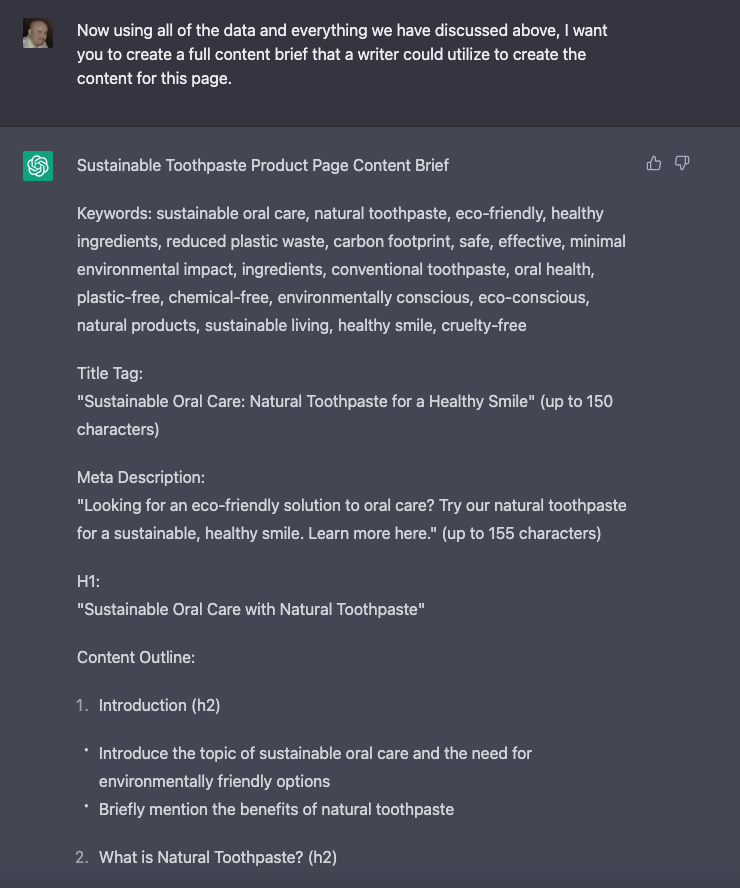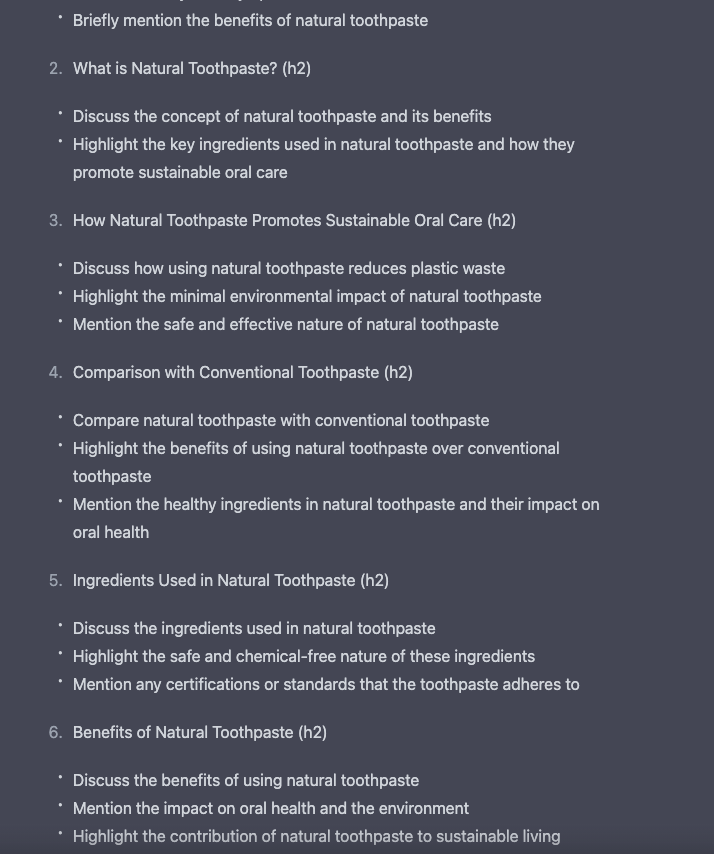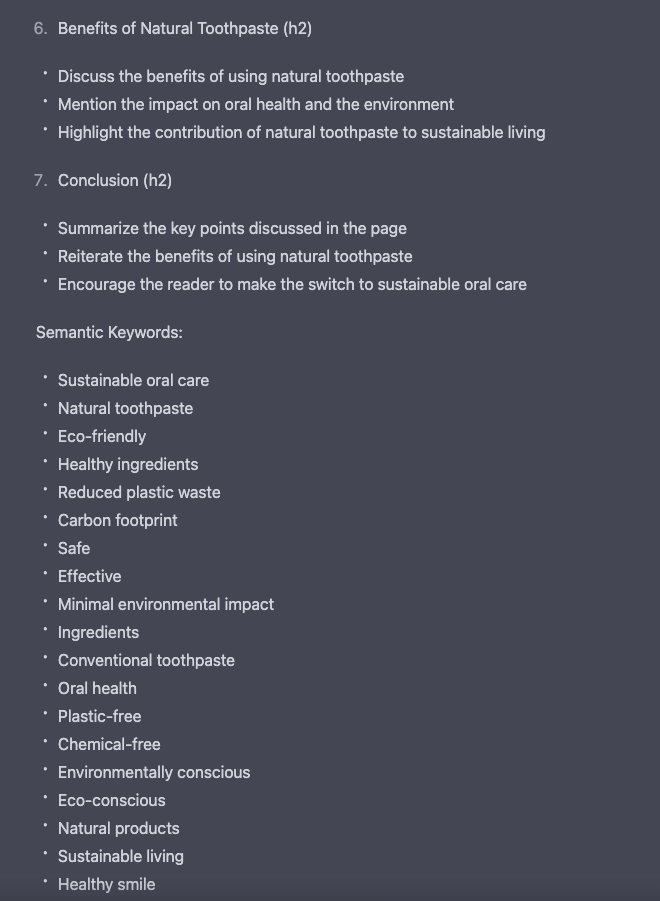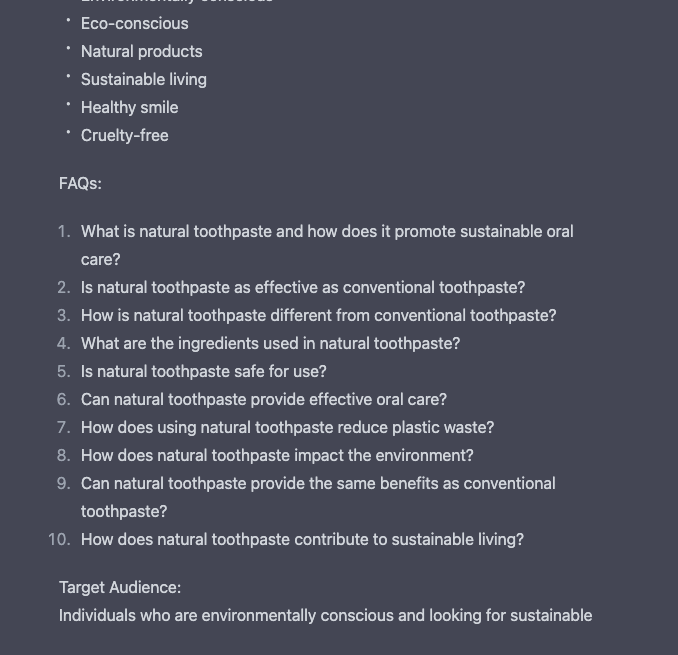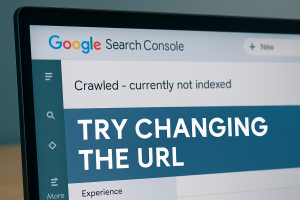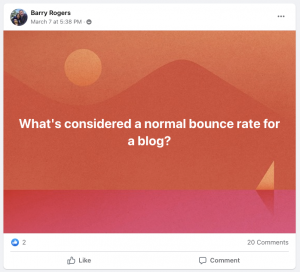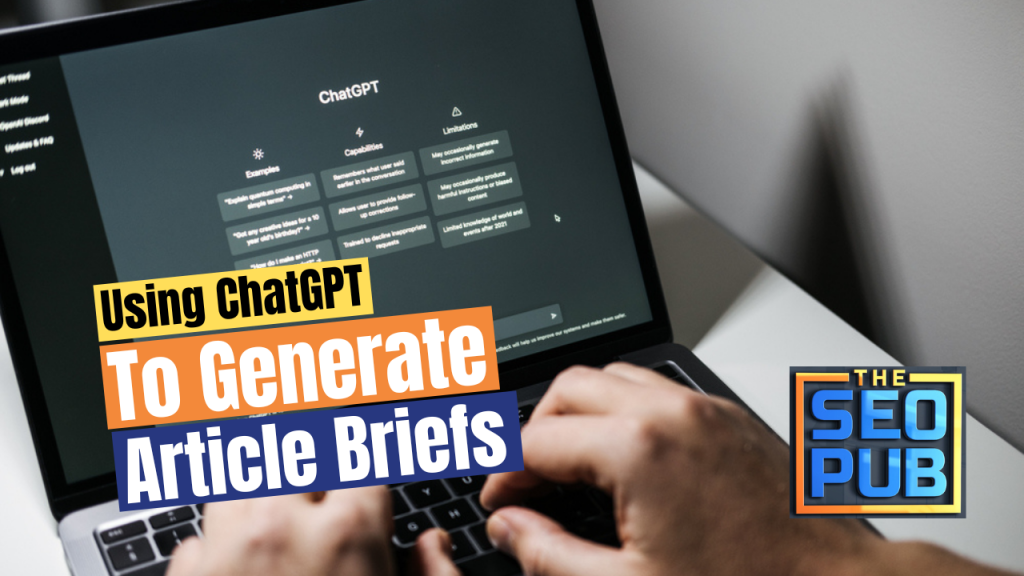
The idea of using ChatGPT to generate content has the SEO community pretty much split down the middle. Many insist it is against Google guidelines (it is not). Others will concede that it is not against Google’s guidelines, but Google may change their stance on it in the future. Most of the rest of the community just says to fire away.
Wherever you fall in the argument there is no denying that ChatGPT can be a great tool for assisting in your content generation process.
Today’s note is about exactly that topic, and it is inspired from a post by Jess Redman I came across on LinkedIn last week. For those of you who do not know Jess, she is a talented SEO hailing from London. You can check out her website here, and if you are not following her on LinkedIn, I would highly recommend doing so. She shares some great information there.
Last week she mentioned how she is using ChatGPT to help in the generation of SEO optimized content briefs. (link to original post)
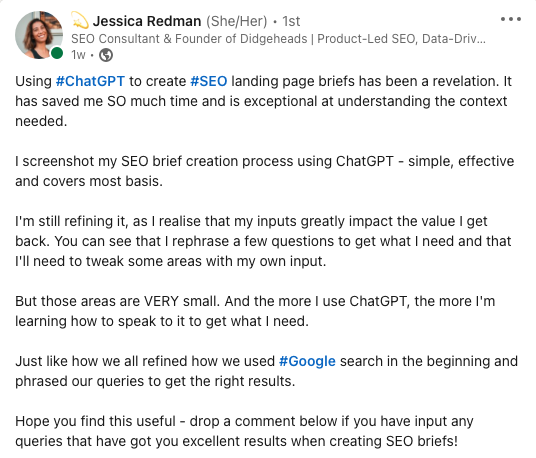
I love her process and wanted to walk through it with a few additional tips along the way.
First, she is starting with broad terms, and then from there she narrows it down to some options that people are likely to use in search.
From there she asks ChatGPT to suggest a title and meta description, reminding it to use the keywords she wants to target.
One thing I might do differently here is ask it for 5-7 title tags to give me some additional options to pick from or help me brainstorm to write my own.
I also like this variation to her prompt for meta descriptions:
Now write a meta description for this page. Make sure you use the two mentioned keywords. Start the meta description with a question as a hook.
Adding this sentence on the end will add a nice call to action in your meta description.
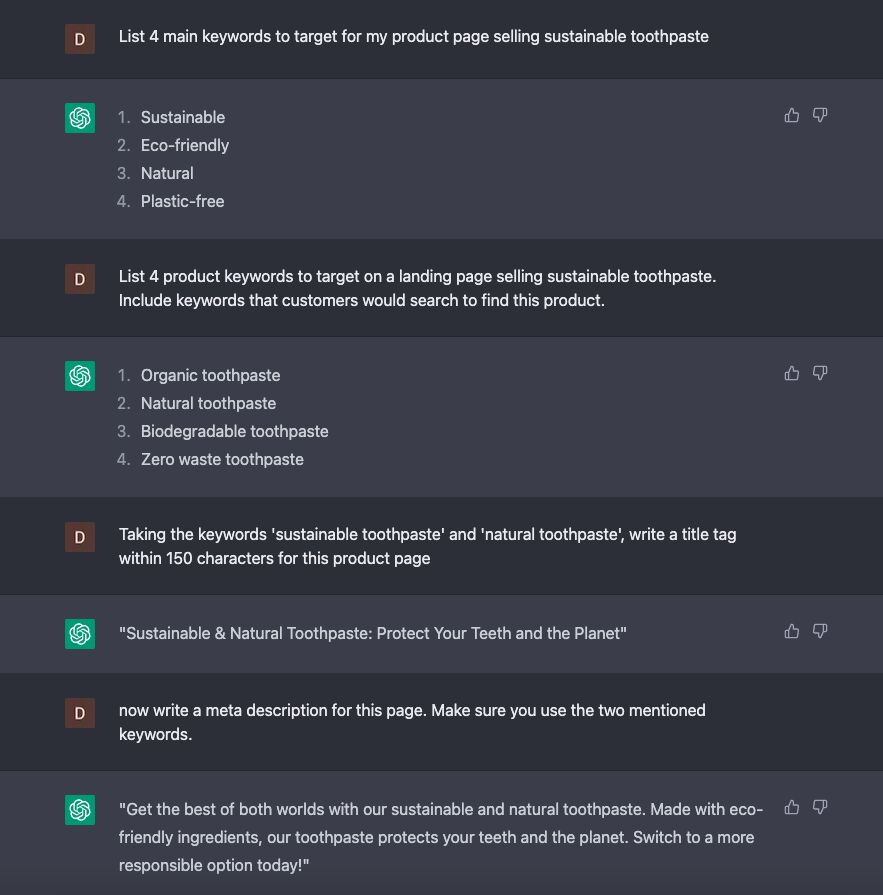
Now she has ChatGPT generate her H1 tag and build a content outline for the page, again reminding ChatGPT of the primary keywords she is targeting.
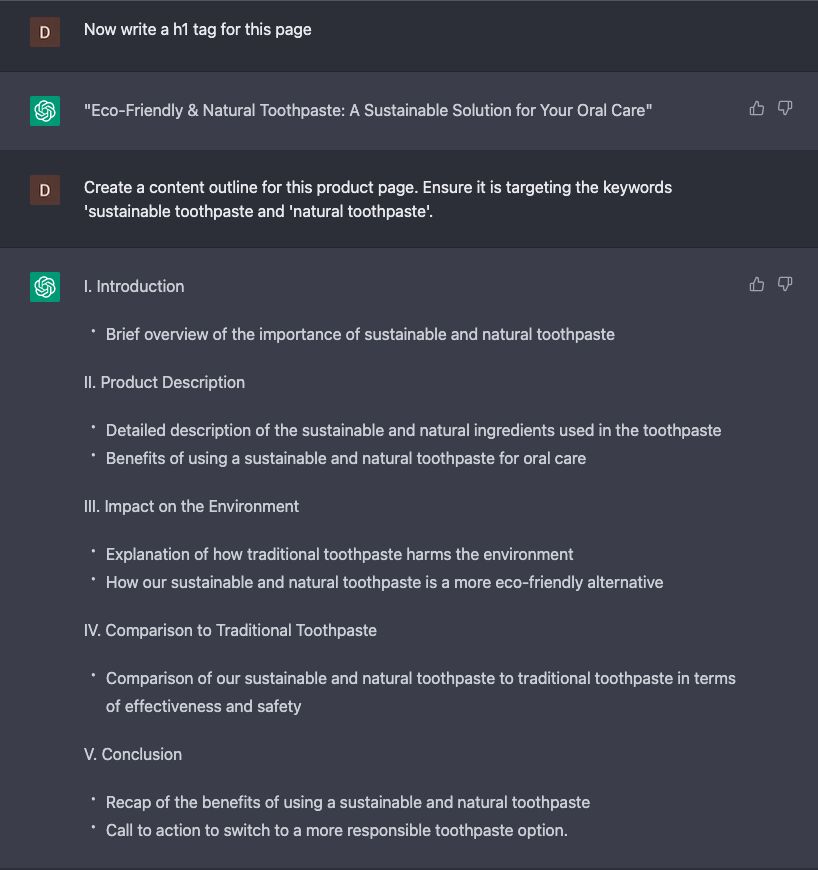
It’s always important to remember that ChatGPT is a chat bot. You can easily reference things it has already done and have it edit, expand on, or modify that output for you without making it repeat the entire prompt, as Jess does here asking it to label the headings with H2 and H3 tags.
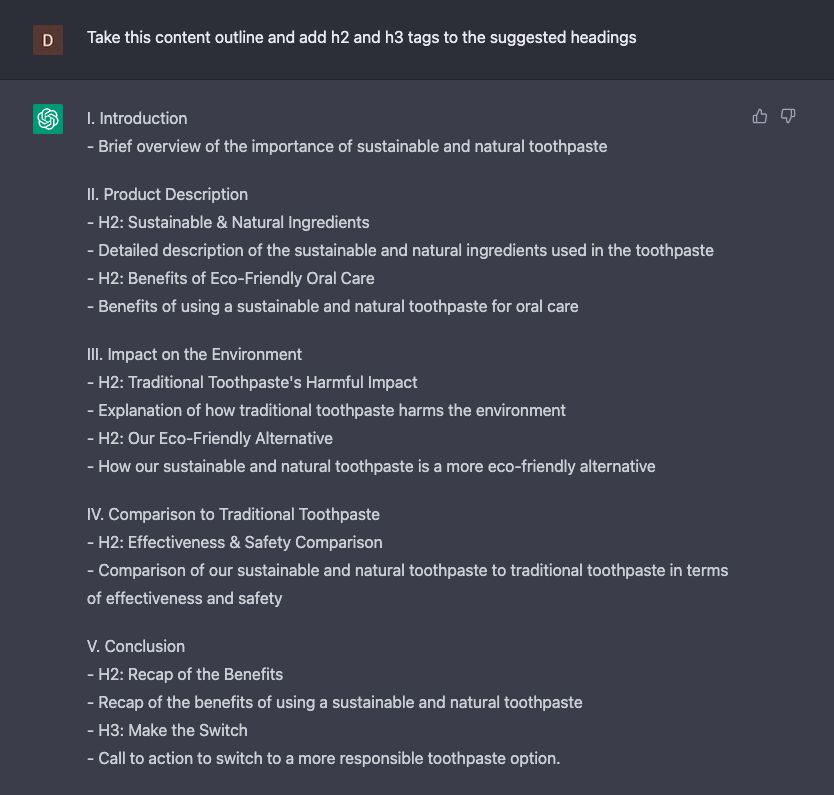
This part is brilliant and something I have seen other people who are using ChatGPT for this very purpose not include. So much of on page SEO and rankings today revolves around semantic SEO.
Call these semantically related keywords, entities, or even LSI keywords (even though that term is flat out wrong). As ChatGPT points out at the bottom, by including these terms in the content, it will help search engines to understand what the content is about and match it up to the search intent of related queries.
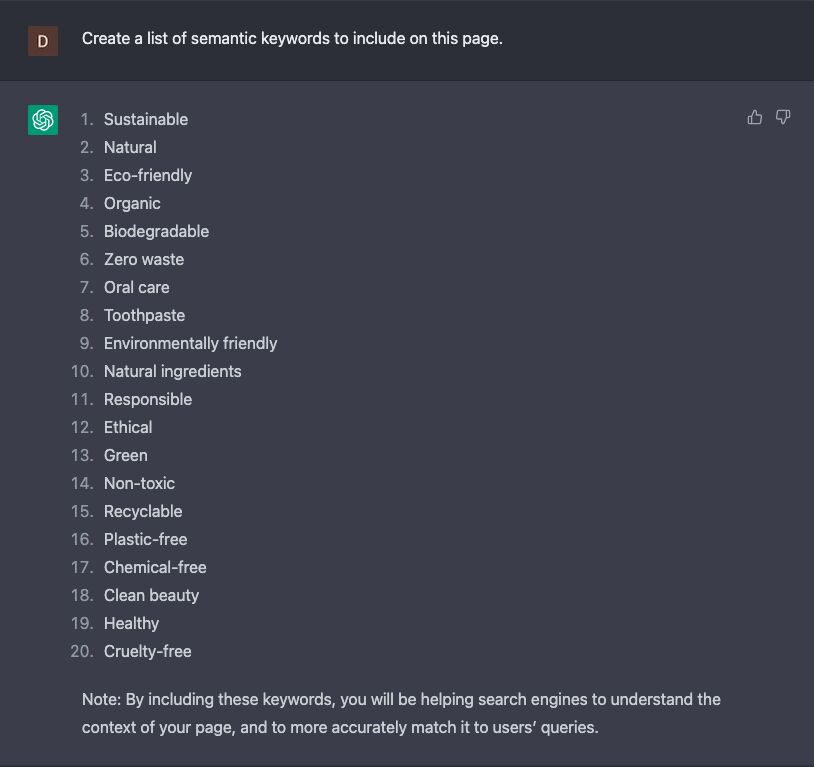
This step puts these semantically related terms into a little more context and can make it easier for whoever will be writing the content to include them in appropriate places.
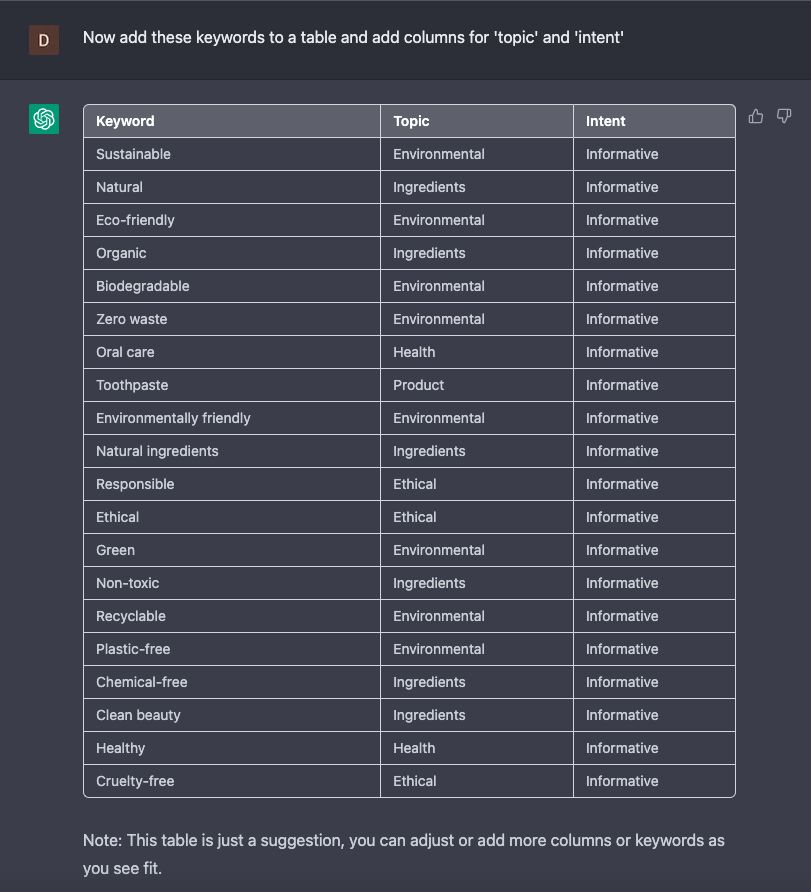
Next Jess asks ChatGPT to provide a list of frequently asked questions about the content that will be on this page.
These questions can be included within the body of the page or they could be used to build out an FAQ section at the end. You could also ask ChatGPT to generate the answers for these questions and then give it this prompt:
With the above frequently asked questions and answers, I want you to create FAQ schema in JSON-LD format.
ChatGPT will build out your FAQ schema for you to add to the page.
I have had mixed results with her final prompt. Sometimes it hits and sometimes ChatGPT just seems to make up a few posts that do not actually exist, but worst case it can provide some ideas for searches for reference material to link to.
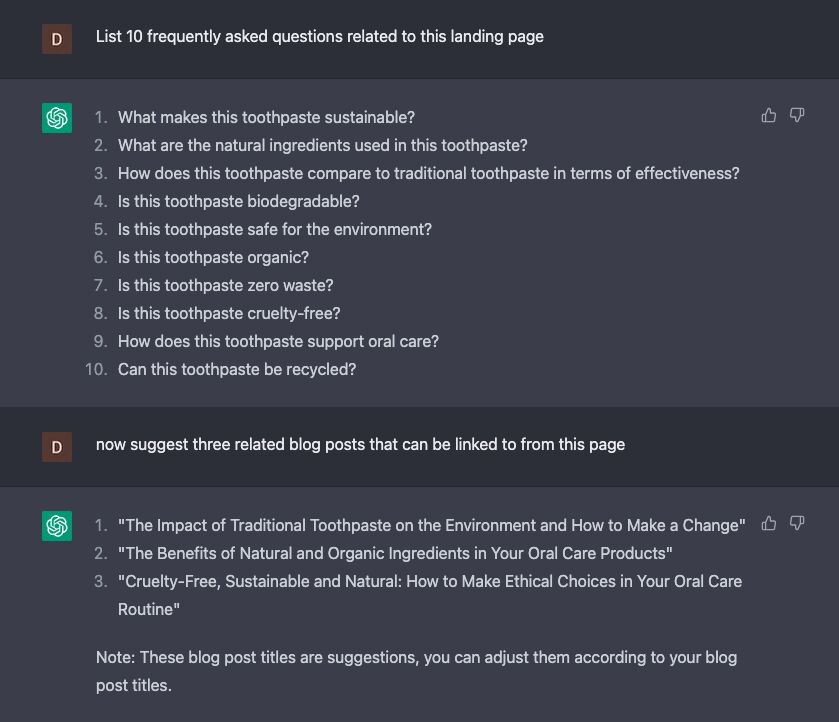
This is where she stopped, and as I mentioned above I love the steps she takes to get to build out an article brief.
However, you can take this one step further with this additional prompt to tie it all together:
Now using all of the data and everything we have discussed above, I want you to create a full content brief that a writer could utilize to create the content for this page.
You could modify this prompt to tell it who your target audience is and what the objective or goal is for the piece of content as well.
I ran through all these prompts and added this prompt on the end to show you an example.
